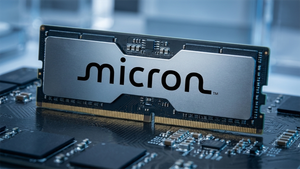
In a landmark announcement at the Sibos conference in Frankfurt on September 29, 2025, SWIFT, the backbone of global financial messaging, revealed its strategic move to integrate a blockchain-based shared ledger into its core technology infrastructure. This pivotal development signals a profound shift in the landscape of cross-border payments, promising to usher in an era of real-time, 24/7 transactions, significantly lower costs, and unprecedented transparency across international financial flows. The initiative is poised to revolutionize how regulated tokenized value moves between banks and digital ecosystems, addressing long-standing inefficiencies that have plagued traditional correspondent banking for decades.
The immediate implications are far-reaching. By extending its messaging capabilities into a digital ledger environment, SWIFT aims to facilitate the secure and scalable transfer of digital assets and currencies, enhancing the speed and reliability of global commerce. This move positions SWIFT not just as a messaging service, but as a critical enabler of the rapidly evolving digital economy, laying the groundwork for a more interconnected and efficient global financial system.
The Dawn of a Digital Backbone: SWIFT's Shared Ledger Initiative
The newly announced blockchain-based shared ledger is a monumental undertaking, designed to record, sequence, and validate transactions while enforcing rules through smart contracts. SWIFT's ambition is to create a system built for seamless interoperability with both existing financial networks and emerging digital asset platforms. This initiative is a direct response to the growing demand for faster, cheaper, and more transparent international payments, which traditional systems often struggle to provide.
The project is currently in its nascent stages, having just commenced work with over 30 leading global financial institutions from 16 countries to design and build the ledger. A conceptual prototype has already been developed in collaboration with blockchain software firm Consensys, a major player in the Ethereum ecosystem. Reports suggest SWIFT (SWIFT) is exploring the migration of its system on-chain using Consensys' (Private Company) Ethereum Layer 2 Linea, highlighting a strategic embrace of cutting-edge blockchain technology. While a definitive target launch date for full production deployment remains flexible, prioritizing accuracy and robustness, the rapid progression from concept to prototype underscores SWIFT's commitment to swift innovation. This shared ledger builds upon SWIFT's extensive digital asset trials conducted over the past two years, including significant work on Central Bank Digital Currency (CBDC) interoperability, demonstrating a methodical approach to integrating DLT.
Navigating the New Frontier: Potential Winners and Losers
The integration of a blockchain-based ledger by SWIFT will undoubtedly create both significant opportunities and formidable challenges across the financial sector. Financial institutions that actively participate in the design and early adoption of this new ledger stand to be major winners. Banks like Bank of America (NYSE: BAC), Citi (NYSE: C), JP Morgan Chase (NYSE: JPM), HSBC Holdings plc (LSE: HSBA), Deutsche Bank AG (FWB: DBK), BNP Paribas SA (EPA: BNP), Banco Santander, S.A. (BME: SAN), Standard Chartered PLC (LSE: STAN), Wells Fargo & Company (NYSE: WFC), DBS Group Holdings Ltd (SGX: D05), Oversea-Chinese Banking Corporation Limited (SGX: O39), United Overseas Bank Limited (SGX: U11), Mitsubishi UFJ Financial Group, Inc. (TYO: 8306), Mizuho Financial Group, Inc. (TYO: 8411), and Shinhan Financial Group Co., Ltd. (NYSE: SHG) are already at the forefront, contributing to its development. These early movers will likely gain a competitive edge in offering faster, more cost-effective cross-border payment services, potentially attracting new clients and improving their operational efficiencies.
Blockchain technology providers like Consensys (Private Company) are clear beneficiaries, solidifying their role as crucial partners in mainstream financial innovation. Their expertise in Ethereum-based solutions is proving invaluable to legacy institutions like SWIFT. Conversely, traditional correspondent banks that are slow to adapt or fail to integrate with SWIFT's new ledger could face significant disruption. Their revenue streams from traditional cross-border payment fees might diminish as more efficient, blockchain-powered alternatives gain traction. Furthermore, smaller, less technologically agile financial institutions might struggle with the investment required to upgrade their systems, potentially leading to a widening gap between technologically advanced and less sophisticated players in the global financial market.
A Wider Lens: Industry Transformation and Regulatory Implications
SWIFT's move is more than just a technological upgrade; it's a strategic alignment with broader industry trends towards digitalization, tokenization of assets, and the emergence of Central Bank Digital Currencies (CBDCs). This initiative positions SWIFT as a central conduit for the future of digital finance, ensuring its relevance in an increasingly fragmented digital asset landscape. It directly addresses the "digital islands" problem, aiming to provide interoperability between various CBDCs and existing fiat payment systems, a challenge SWIFT has been actively tackling through its CBDC connector trials with central banks like the Hong Kong Monetary Authority and the National Bank of Kazakhstan.
The ripple effects on competitors, particularly other blockchain-based payment solutions like Ripple (XRP), could be substantial. While Ripple has championed fast, low-cost cross-border payments using its XRP ledger, SWIFT's entry with the backing of its vast network of banks could either legitimize the DLT space further, leading to broader adoption, or intensify competition for market share. Regulatory bodies will also be closely watching. The integration of a blockchain ledger into such a critical piece of global financial infrastructure will necessitate clear guidelines around data privacy, security, anti-money laundering (AML), and know-your-customer (KYC) compliance in a decentralized environment. Historical precedents, such as the early struggles of internet banking with regulatory frameworks, suggest that a collaborative approach between innovators and regulators will be crucial for the successful and secure deployment of this new system.
The Road Ahead: Short-Term Pilots to Long-Term Global Impact
In the short term, the focus will remain on the rapid completion of the prototype phase and the subsequent definition of development stages for SWIFT's blockchain-based ledger. Expect to see continued collaboration with the consortium of over 30 banks, refining the technology and addressing any technical or operational hurdles that emerge. Pilot programs and sandboxes will likely expand, exploring new use cases beyond basic payments, such as trigger-based payments for digital trade, advanced foreign exchange models, and delivery versus payment (DvP) mechanisms. These early phases will be critical for demonstrating the ledger's scalability, security, and real-world applicability.
Looking further ahead, the long-term possibilities are transformative. A fully deployed SWIFT blockchain ledger could fundamentally reshape global finance, enabling instantaneous settlement of a wide array of tokenized assets, from securities to commodities, beyond just currencies. This could unlock new market opportunities in areas like fractional ownership, automated trade finance, and highly efficient treasury management. However, challenges such as achieving widespread adoption among all 11,000+ SWIFT member institutions, overcoming potential integration complexities with diverse legacy systems, and navigating evolving global regulatory landscapes will be paramount. Strategic pivots or adaptations will be required as the technology matures and market demands shift, but the trajectory is set towards a more agile and interconnected global financial ecosystem.
A New Chapter for Global Finance
SWIFT's decision to embed a blockchain-based shared ledger into its core infrastructure marks a definitive turning point for cross-border payments and the broader financial technology sector. This move underscores the undeniable shift towards digital assets and distributed ledger technology as foundational elements of future global finance. The key takeaways are clear: SWIFT is not just adapting; it is actively shaping the future of money movement, aiming for 24/7, real-time, and cost-efficient international transactions.
Moving forward, the market will be closely watching the progress of SWIFT's prototype, the expansion of its banking consortium, and any further announcements regarding deployment timelines. Investors should pay close attention to the financial performance and strategic announcements of the banks involved in this initiative, as well as the competitive responses from other FinTech players and blockchain solutions. The lasting impact of this development will be a more efficient, transparent, and digitally-native global financial system, with SWIFT positioned at its very heart. This content is intended for informational purposes only and is not financial advice





